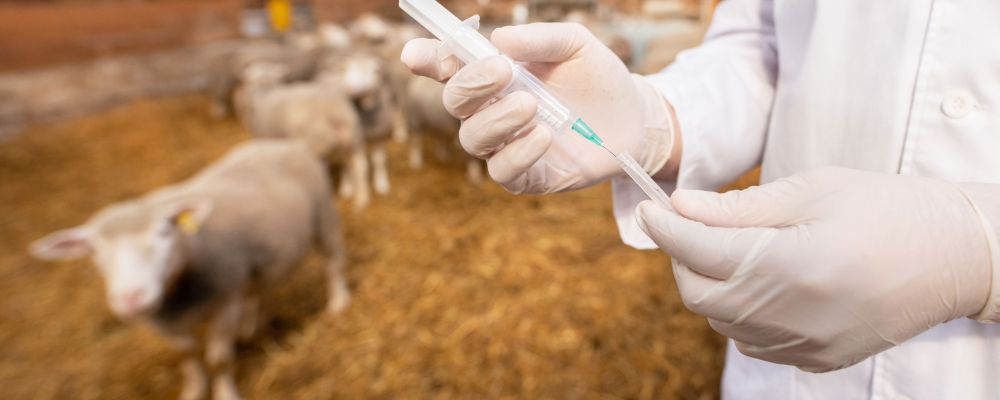- The ANMV
- Our activities
- Administrative formalities
- Our Publications
- Europe & International
- Europe
- International
- World Organisation for Animal Health (WOAH)
- International harmonisation of technical requirements for the registration of veterinary medicinal products (VICH)
- Pharmaceutical inspection cooperation scheme (PICs)
- Organisation for Economic Co-operation and Development (OECD)
- Codex Alimentarius
- Cooperation agreements
- E-learning module
Portal Veterinary medicinal products


Phytotherapy and aromatherapy: adapting risk assessment in veterinary medicine
Herbal preparations (phytotherapy) and essential oils (aromatherapy) are increasingly being used as alternatives to other “allopathic” medicinal products for the treatment of animals. This is true even for food-producing animals. If the products used have a therapeutic purpose, they are considered veterinary medicinal products.This means it should be possible to guarantee there is no risk to consumers of foods derived from treated animals. However, it is complicated to implement the current regulations to assess this risk for herbal medicinal products. ANSES therefore issued an internal request to propose a specific assessment methodology for herbal veterinary medicinal products.
The use of herbal veterinary medicinal products is gaining popularity among farmers and veterinarians. However, the large majority of plants, herbal preparations and essential oils commonly used in veterinary medicine have not been assessed in accordance with the regulations on veterinary medicinal products. As a result, they cannot be used for therapeutic purposes for food-producing animals. This is due in particular to the absence of maximum residue limits (MRLs); an MRL is the maximum quantity of an active substance contained in a medicinal product that can be found in food of animal origin without posing a risk to consumer health. These limits, defined at European level, are a prerequisite for authorising the placing on the market of veterinary medicinal products intended for food-producing animals.
The current method is not suitable for herbal medicinal products
“The analytical methods used in MRL dossiers are complicated to implement for herbal medicinal products” explains Sophie Barreteau, Assistant to the Director of ANSES-ANMV (French Agency for Veterinary Medicinal Products) in charge of the Scientific Assessment Department. "The difficulty lies in the identification, for a given herbal substance, of marker residues (parent substance and metabolites for assay). The issue is even more complex when using essential oils, given the number of chemical compounds they contain. Similarly, strict botanical identification of the plant used is a prerequisite”.
Facilitating the use of plants in veterinary medicine without any risk to consumers
The ANMV, which is part of ANSES, therefore carried out an expert appraisal to propose an appropriate assessment methodology. This could be used to produce a list of plants for which an MRL does not need to be defined since their use is considered safe for consumers.
These are plants that have already been assessed under other regulations and for which data are available: for example, plants normally consumed by animals or humans, herbal substances authorised in food or feed supplements or contained in authorised medicinal products for human use, or plants for which there are data showing they are not toxic to humans at the doses used.
"This methodology proposes a scientific approach to assessing plants and ensuring they do not pose any risks. European recognition of this methodology would enable many plants to be classified regarding MRLs and would keep phytotherapy and aromatherapy from being used outside of the regulatory framework, as at present” affirms Jean-Pierre Orand, ANSES-ANMV Director.
In addition, for certain plants or parts of plants, using the proposed methodology, it cannot be concluded that they are safe since there is a lack of studies or data. Their authorisation in veterinary medicine will need to be assessed on a case-by-case basis, and additional studies will have to be undertaken. The last category is that of plants that cannot be used in veterinary medicine due to their proven toxicity to humans and a possible risk to consumers.
Official European recognition of ANSES's methodology is required
In order to validate the developed method, the Working Group tested it for 21 plants, essential oils and substances significantly present in essential oils commonly used in veterinary medicine. “Please note that the conclusions of the expert appraisal are not a green light for their use in herbal medicinal products” clarifies Sophie Barreteau. “This would require official recognition of the methodology at European level. We will soon submit it to the European Medicines Agency (EMA). Our work is a step towards the inclusion of herbal substances on a list derived from the MRL regulations, and therefore towards the ability to use plants and essential oils in veterinary medicine without any risks to consumers, in order to meet the strong demand from farmers and veterinarians wanting to use alternatives to synthetic antibiotics”.